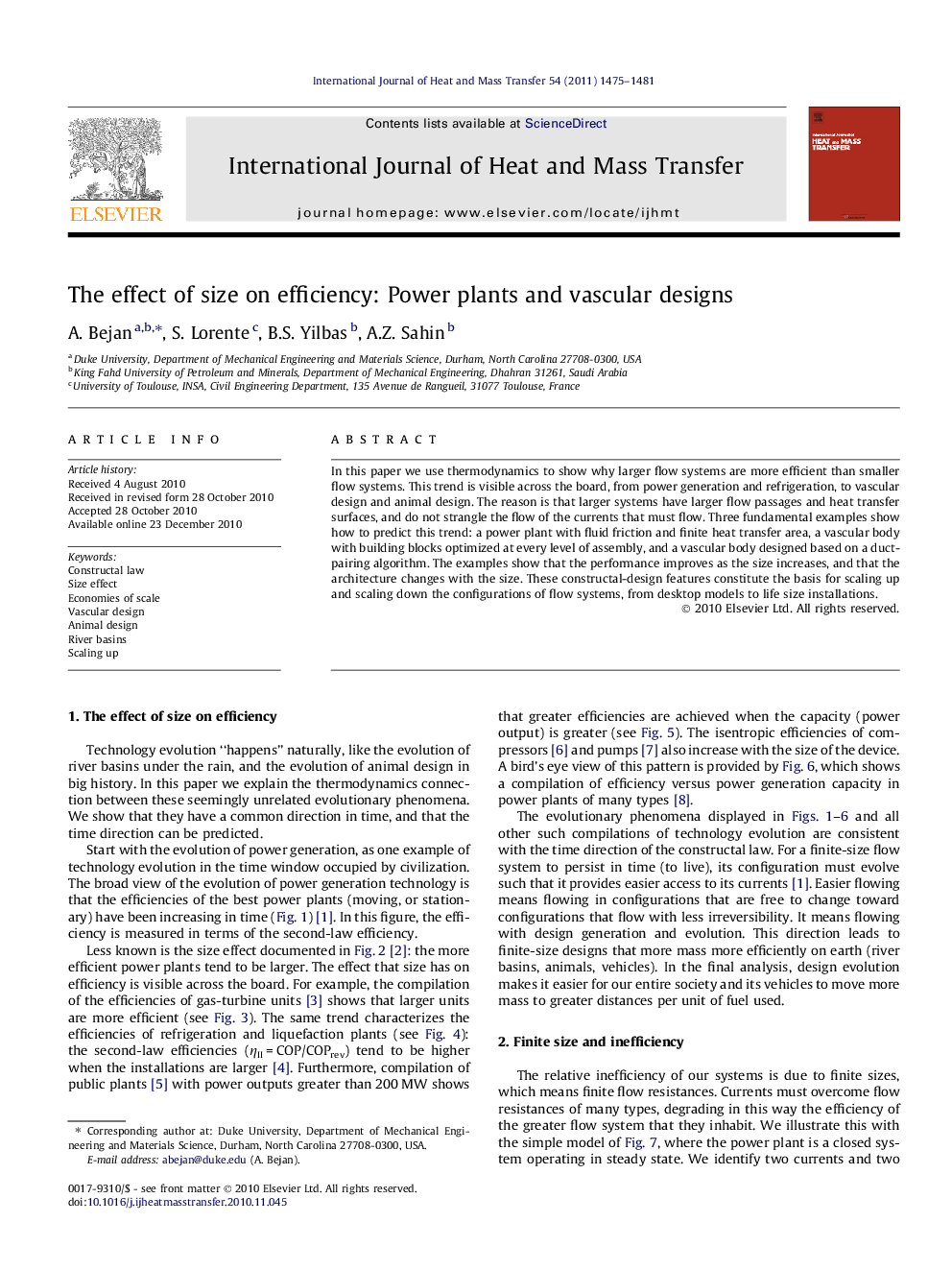| Article ID | Journal | Published Year | Pages | File Type |
|---|---|---|---|---|
| 7059822 | International Journal of Heat and Mass Transfer | 2011 | 7 Pages |
Abstract
In this paper we use thermodynamics to show why larger flow systems are more efficient than smaller flow systems. This trend is visible across the board, from power generation and refrigeration, to vascular design and animal design. The reason is that larger systems have larger flow passages and heat transfer surfaces, and do not strangle the flow of the currents that must flow. Three fundamental examples show how to predict this trend: a power plant with fluid friction and finite heat transfer area, a vascular body with building blocks optimized at every level of assembly, and a vascular body designed based on a duct-pairing algorithm. The examples show that the performance improves as the size increases, and that the architecture changes with the size. These constructal-design features constitute the basis for scaling up and scaling down the configurations of flow systems, from desktop models to life size installations.
Related Topics
Physical Sciences and Engineering
Chemical Engineering
Fluid Flow and Transfer Processes
Authors
A. Bejan, S. Lorente, B.S. Yilbas, A.Z. Sahin,
